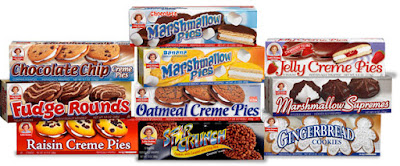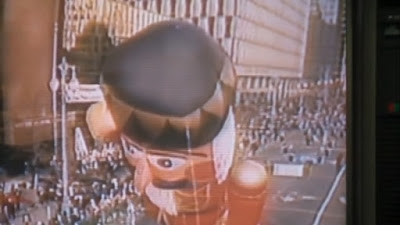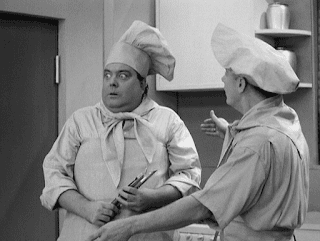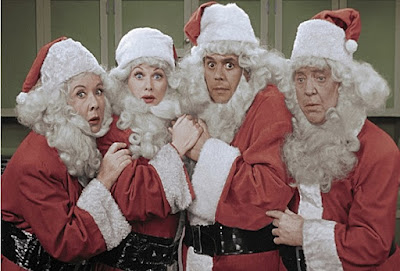Way back in 1986, Vince McMahon and the World Wrestling Federation were beginning to set American pop culture on fire. The year before, McMahon had bet his personal wealth on the inaugural Wrestlemania and succeeded. A winning combination of MTV, rock music and wrestling had ignited interest in viewers who were not typically considered a "pro wrestling audience."
In the spring of 1986, the World Wrestling Federation was getting ready to host Wrestlemania 2. This time, the event would again focus on the promotion's leading man, Hulk Hogan. This time he was scheduled to battle "King Kong" Bundy for the WWF World Heavyweight Title. Wrestlemania 2 differed from the first, airing live from three locations across the country: Nassau Coliseum on Long Island, the Rosemont Horizon near Chicago, Illinois, and the Los Angeles Memorial Sports Arena in Los Angeles, California.
While this groundbreaking, nationwide, multi-arena spectacle was broadcast on closed-circuit television and pay-per-view, one of the handful of the remaining regional "territories" from wrestling's yesteryear was hanging on by a thread.
The AWA, or American Wrestling Alliance, had roots going back to 1948 as the "Minnesota Territory" of the National Wrestling Alliance (NWA). In 1960, the company left the NWA and began promoting itself under the AWA banner. Under the ownership of Wally Karbo and Verne Gagne, the company rapidly expanded through the midwest throughout the 60s and 70s. The AWA, at its peak, reached out from its home base of Minneapolis/St. Paul, Minnesota, to as far as Denver, Las Vegas, San Francisco, and Phoenix.
Many stars throughout wrestling history started in the AWA. There they would become national names. The all-time greats include "SuperStar" Billy Graham, Wahoo McDaniel, Jesse Ventura, "Mean" Gene Okerlund and even Hulk Hogan.
In the early 80s, though, the AWA's fortunes (and all of territory wrestling) took a turn for the worse. Vince McMahon began scooping up talent from around the country, and the AWA saw stars like Okerlund, Bobby "The Brain" Heenan, Ventura, and Hogan leave for the fame and fortune of the WWF. Verne Gagne (pronounced Gahn-yah), now the sole promoter of the AWA, also began to heavily feature his son Greg in major storylines. This lead to charges of nepotism and resentment grew among fans and wrestlers.
In response to his promotion's decline, Verne teamed up with several remaining territories to create a "mega-promotion" called "Pro Wrestling USA" in an attempt to combat the WWF. The jointly-promoted shows weren't enough, and viewership for the AWA continued to decline, especially following 1985 and the first Wrestlemania.
Pro Wrestling USA wouldn't last long, as Verne Gagne accused Jim Crockett Promotions (JCP) of trying to steal talent away from Minnesota, and the joint venture dissolved by the end of 1985.
In September of 1985, the AWA had one last trick up it's sleeve. It had received a timeslot on ESPN to showcase its wrestling to a nationwide audience, much like McMahon and the WWF on NBC and Crockett's NWA on TBS. The AWA shows for ESPN were taped at the Showboat Casino in Las Vegas, Nevada.
In 1986, on the heels of a small resurgence thanks to the new ESPN show, Verne made one last attempt at making a big splash in the wrestling industry with a major event he called WrestleRock 1986. Often criticized for its nearly 4-hour length and poor match finishes, the promotion for the event is often better remembered than the show itself.
To promote this show, the AWA inadvertently created something much more significant than the event itself with The WrestleRock Rumble. Following the WWF's success in 1985 with "The Wrestling Album," a collection of wrestlers' entrance themes, Verne decided to release his own album.
 |
| Shawn Michaels and Marty Jannetty during the WrestleRock Rumble |
Famously, also in 1985, the NFL team located in the heart of AWA country, the Chicago Bears, created a pop culture frenzy with "The Super Bowl Shuffle," a rap song performed by the players on the pro football team.
The cassette released by AWA was titled "2 Hit Songs." The first was titled "Rockin' and Wrestlin'" and the second was "WrestleRock Rumble." The first song was a basic pop/rock song about wrestling that was nothing to write home about, but the second song is worth watching below.
Just stupendous.
The video was shot in and around Las Vegas, mainly in the parking lots, pools, and lobbies of the motels and casinos the wrestlers were staying in while in Vegas for the ESPN tapings. The video featured AWA talent "rapping" their verses, including the promoter Verne Gagne hyping his "return" to the ring.
WWE would parody the song at Wrestlemania 28, featuring Brodus Clay, Yoshi Tatsu, and Santino Marella doing the "Wrestlemania Rumble."
By far the largest event in AWA history, WrestleRock '86 was packed with 15 matches featuring some of the biggest names to ever work in the company. In advertising, the show was highlighted by the promoter and longtime fan favorite Vergne Gagne coming out of retirement "one final time." In reality, fans showed up to see The Road Warriors take on The Fabulous Freebirds and a slew of cage matches at the end of the show.
The show drew 22,000 fans with ticket sales exceeding $300,000, outdrawing the heavily advertised NWA's "Jim Crockett, Sr. Memorial Cup" in the Louisiana Superdome just the day before. The "Crockett Cup" was also a very long show, featuring a total of 21 matches in an all-day tag team tournament.
WrestleRock was broadcast on closed-circuit and was not offered on Pay-Per-View nor broadcast in its entirety on ESPN, although some matches and highlights were shown. WrestleRock was also never released on home video but is currently available on the WWE Network on Peacock. Several edits by WWE are puzzling, especially the removal of a match that includes WWE's own Hall of Famer Shawn Michaels.
On April 20, 1986, at the Hubert Humphrey Metrodome in Minneapolis, Minnesota, our host and announcer for the evening Ron Trongard, welcomes us to Wrestle Rock 1986. Larry Nelson and Ken Resnick provide interviews throughout the show, and following the national anthem, Ken Resnick is ringside with good guy Brad Rheingans who makes sure everyone knows his knee is injured but promises that he'll still win.
Brad Rheingans defeats Boris Zhukov (with manager Sheik Adnan Al-Kaissie) in about 9 minutes with a pinfall. This is a pretty standard old-school match with the story that the good guy Rheingans fights against all odds and makes good on his promise of victory.
Up next, was a "Midget Tag Team Match" with Special Guest Referee Gary Lumpkin, where we saw Cowboy Lang and Little Mr. T defeat Lord Littlebrook and Little Tokyo. The standard fare of cartoon antics and basic wrestling made this a fairly enjoyable match, despite it going on for over 10 minutes. I was never a fan of midget wrestling, so I was wishing I had skipped this.
Next, AWA and all-around wrestling legend Wahoo McDaniel takes on Colonel DeBeers, the not-kosher-in-2023 white supremacist character. Wahoo is likely the most famous and successful Native American wrestler ever and had a long career behind the curtain once his days in the ring were over. The match itself was just... there. Wahoo tosses DeBeers over the top rope, getting disqualified in less than 5 minutes. Your winner, by disqualification, is Colonel DeBeers, the white supremacist. The two fight at ringside following the match.
Based on all written reports, this is where the Shawn Michaels match would take place but was edited out of the WWE Network presentation. The Midnight Rockers (Michaels and Marty Jannetty) defeated Doug Somers and "Playboy" Buddy Rose.
On the WWE Network edit, the next thing we see is the Athletic Director from the University of Minnesota, Paul Giel, who is introduced to the audience. Ken Resnick tries to interview "Rock and Roll" Buck Zumhofe at ringside, but Zumhofe was inaudible during the interview due to loud music being played.
Zumhofe then lost to Tiger Mask (Misawa) in a match that was pretty good for a mid-'80s, slow-paced match. Tiger Mask hits a top-rope somersault for the finish.
I didn't know much about Zumhofe, and when I googled him, I wish I didn't. Three months after this show took place, he was jailed for 3 years for sexual misconduct with a minor. He was also arrested in 2013 and charged with 12 felony counts for abusing his daughter between June 1999 and June 2011. When convicted, he tried to flee the courthouse but was tackled by guards and had an "escape from custody" charge added. He was sentenced to 25 years in prison in 2014.
Minnesota Governor Rudy Perpich announced "Verne Gagne Day" next, although this was edited out of the WWE version, too.
Instead, we see Mike Rotundo and Barry Windham at ringside, talking about proving themselves in the AWA, before entering the ring to take on The Fabulous Ones (Stan Lane and Steve Kern).
For those keeping score, The Fabulous Ones lost their first-round match to The Fantastics just a day before in the National Wrestling Alliance's Jim Crockett, Sr. Memorial Cup. Perhaps it was just because I was most familiar with the participants of this match, but I felt it was the best on the entire show. It reminded me of many old-school JCP tag matches with good timing, action, and storytelling. In the end, Windham makes the cover for the win near the 15-minute mark.
A very slow, plodding match between "Giant" Baba and "Bulldog" Bob Brown was next. Mercifully, this was over in 5 minutes when Baba hit the big boot for the win.
Legendary wrestler Harley Race shows up at ringside and says he'll prove he's still the absolute best and that the current AWA Champion, Stan Hansen, is next on the "List of Harley." That may be, but on this show, Harley goes toe-to-toe with Rick Martel in a match titled "Battle of the Ex-Champions." This match was a good 15 minutes of old-school psychology that ended in a double count-out. The crowd was growing restless, having sat this long into the show so far, but they were visibly unhappy with the result of this match.
The "$50,000 10-Woman Battle Royal" was shown next, starring wrestlers like Kat LeRoux, Leona Vachon, Rose Divine, Sherri Martel, and the AWA World Women's Champion Candy Divine. I love a good battle royal and this one was just... ok. The goal of this match was to push the Divine vs Martel feud.
The final four were Martel, Combs, Divine, and Grable. Divine thinks she won the match at one point, but Martel reenters the ring and knocks Divine out for the win and the $50,000. Afterward, Martel demands a title shot.
A 10-minute intermission was cut out of the WWE broadcast, and following the Women's Battle Royal, Larry Nelson joins Rod Trongard at the announce desk for the remainder of the show.
We open the show's second half with a match for the American Heavyweight Championship. The current Champion, Sgt. Slaughter puts his belt on the line against Kamala (with Skandor Akbar.) The audience is clearly excited to see Sgt. Slaughter, but like most Kamala matches I've seen, this one is pretty boring. Kamala's manager Akbar gets involved while Slaughter has the Cobra Clutch locked in, causing a DQ finish. After the match, Slaughter gets revenge on Kamala and Akbar before grabbing a microphone to tell Minnesota he's glad to be back in the AWA. He then leads three kids from the audience through the Pledge of Allegiance.
 |
| "Big" Scott Hall and Curt Hennig |
The announcers stressed that Hall and Hennig were looking for retribution after The Long Riders attacked Curt Hennig weeks before. The match was decent, and Curt Hennig was the star of the bout. Hard to believe this match is just two years away from Hennig's legendary run as "Mr. Perfect" in the WWF. Hennig wins with a dropkick and pinfall 13 minutes in. Afterward, Scott Irwin attacks the champions with a "loaded" boot.
Scott LeDoux tells Ken Resnick that he's "coming down on" Larry Zbyszko. He's going to come down on Zbyszko like "a thousand tons of Idaho potatoes." Seriously, some tough talk there...
Larry "The Living Legend" Zbyszko climbs into the ring to take on LeDoux in a boxing match that's reminiscent of the WWF's Brawl For All series of matches in the late 90s. Zbyszko takes over the match by round three, except when LeDoux nearly knocks him out in the next round. At the start of the 5th round, a very bloody Zbyszko flees the ring. LeDoux gives chase, and Larry slams him into the ring post and gets disqualified, ending the match. Larry "The Axe" Hennig makes the save after Zbyszko beats LeDoux senseless with ninja nunchucks.
Stan Hansen makes his way to the ring next and beats up Larry Nelson as he walks by. Nick Bockwinkel comes to the ring with a bullwhip, ready to fight. This match was a stiff, physical fight that sees both men, arguably past their time, get one more day in the sun. This seemed too short, and I felt as if they went right into the finish once the match started. The referee goes down just when Bockwinkel has Hansen on the ropes and while the ref struggles to his feet, Hansen dumps Bockwinkel over the top rope and is disqualified.
That's the third or fourth time tonight that the same finish was used, and the fans in attendance (and myself) were pretty displeased. After the match, the two continue fighting until Hansen runs to the back.
The "Tag Team Steel Cage Grudge Match" is next, as "The Barbarian" Jim Nord and King Kong Brody (aka Bruiser Brody), managed by Sheik Adnan Al-Kaissie, go against Greg Gagne and Jimmy "Superfly" Snuka. Verne Gagne comes to the ring with his son and Snuka.
Snuka was a last-minute replacement for Jerry Blackwell, who we were told had "medical reasons" for not competing. This was Snuka's first match in the AWA, but without Blackwell, the match suffered without him. The whole point of the match was to blow off the Brody/Blackwell feud, which was one of AWA's biggest storylines at the time. Instead, the focus shifted to Verne getting revenge on Al-Kaissie, the manager for Brody.
This match was bloody and violent, as Brody and Barbarian beat down Snuka and Greg Gagne badly. The match seems to fall apart towards the end when eventually Brody takes out Barbarian by mistake, and Snuka makes the pinfall. After the match, all four fight to the back.
Immediately following the tag match, a "10-Minute Steel Cage Grudge Match" between Sheik Adnan and Verne Gagne was set to take place in Verne's grand return. The "10-Minute Match" lasts under 4 minutes as Gagne runs Sheik around the ring before winning with a small package finish (following a botched first attempt). After Verne wins, he tells Larry Nelson that this match was "truly my last one."
The cage remains up for the Main event of the evening, as The Road Warriors (Hawk and Animal) take on The Fabulous Freebirds (Jimmy Garvin and Michael P.S. Hayes) in a "Tag Team Steel Cage Match."
This match marked the Road Warriors' second to last AWA appearance in the AWA, as they finished their tenure at Rage in a Cage on April 28, 1986. This was also Jimmy Garvin's final AWA appearance, while Michael Hayes appeared one more time at Super Clash III before exiting the company. I know everyone loves the Freebirds trio of Hayes, Gordy, and Roberts from their days in Texas, but I always preferred Jimmy Garvin and Micahel Hayes (and manager Diamond Dallas Page) from their days in early 1990s WCW.
Hey, what you see and like when you're young is what you tend to prefer forever.
The Road Warriors are in control for much of the match and win in just 6 minutes after Hayes hits Garvin by accident with brass knuckles. After the match, the Road Warriors continue to beat down the Freebirds, but, funny enough, as soon as the bell rings to end the match, you can see the Metrodome empty out like someone was giving away free money in the parking lot.
Four hours is a long time to sit through some relatively boring stuff, and people only stayed to see the extremely popular Road Warriors and Freebirds. Those poor people couldn't wait to leave once they finally got to see what they came for.
Despite the fans rushing for the exits, the AWA took a page out of Jim Crockett's "Great American Bash Tour" playbook and had country music legend Waylon Jennings perform a brief concert following the show.
In the days after this event, the AWA couldn't maintain its momentum, and by the end of the year, they were in worse financial shape than ever. The continued departure of talent and their old-fashioned approach to wrestling and television broadcasts contributed to the rapid decline of what I consider one of wrestling's top 5 promotions of all time.
Despite falling behind the WWF and NWA after WrestleRock, Verne Gagne still managed to find and develop young talents during its waning years like Scott Hall, "Bull Power" Leon White (later known as Big Van Vader,) The Nasty Boys (Brian Knobs and Jerry Sags,) Eric Bischoff, and Madusa. When Nick Bockwinkle retired, Gagne relied on Curt Hennig (Mr. Perfect) as his next champion. Verne would showcase Hennig and the Midnight Rockers (Shawn Michaels and Marty Jannetty) as his top acts during 1987 and 1988.
In a final attempt to survive, Gagne renewed a relationship with Memphis-based promoter Jerry Jarrett and his Continental Wrestling Alliance, even allowing Memphis main-stay Jerry "The King" Lawler to win the AWA World Heavyweight Title from Hennig.
In February of 89, Larry Zybszko (who also happened to be Verne's son-in-law) returned to the AWA to win the vacated World Title by eliminating Tom Zenk.
AWA would eventually fade away, with most wrestlers ending up on TBS working for Ted Turner's World Championship Wrestling. Those that didn't go down with the ship, or flee to Atlanta (WCW), would have already found a soft landing spot in Vince McMahon's WWF in the late 80s. Gagne pushed Hennig and The Midnight Rockers throughout 1987 and into 1988, but the WWF came calling and all three of his top stars would soon be gone.
In early 1989, Eric Bischoff, who was working in the advertising office for the AWA, was forced in front of the camera to be a last-minute replacement for Larry Nelson, launching a career that would change the entire industry. Bischoff would later become a dominant force, becoming the man in charge of running World Championship Wrestling in the mid-90s. Bischoff is responsible for launching the Monday Night War against the WWF when, under his command, WCW launched Monday Nitro on TNT.
The AWA would become inactive when the final television taping occurred on August 11, 1990. Zbyszko signed with WCW, and as his last official act, Verne stripped the already departed champion of his title in December of 1990. In 1991, Gagne officially filed for bankruptcy.
Verne Gagne would promote two shows under the AWA name in 1991, featuring the return of Greg Gagne and Wahoo McDaniel, along with Baron Von Raschke, Buck Zumhofe, and The Destruction Crew (Mike Enos & Wayne Bloom), but he was unable to revive the promotion. Despite this, the AWA continued re-running matches in their weekly ESPN time slot for a handful of years.
In 2003, WWE purchased the assets of the AWA from the Gagne family, and all footage is now owned by WWE. WWE has only made a small portion of the AWA video library available.
WrestleRock (the song) is admittedly a "guilty pleasure" (I hate that term) of mine. Its memory occupies a part of my brain where I keep things that are "so bad it's good." The actual event may be featured on "Wrestle Crap," but I still found WrestleRock 1986 an entertaining entry into pro wrestling events from YesterYear.


.png)








.png)





Comments
Great job on this. A lot of details really help paint the picture of how sad the AWA was at this time.
ReplyDeleteThanks Mick!
DeleteGrowing up in Wisconsin, my first exposure to pro wrestling was AWA when I was a kid. That is the only wrestling I could watch before cable television. I even went to several live events in Milwaukee. So AWA always holds a special place for me especially those earlier years. I remember so many of those wrestlers very well before many moved on to other promotions. I only casually paid attention in those later years once I had full access to WWF and NWA/WCW through cable. But I do remember when this Wrestle Rock event took place and it was fun to read your account of the AWA at that time.
ReplyDeleteThanks for reading Tim! Since I was only 2 in 1986, this is more of a historical look back. It must have been fun watching AWA in its glory years, rather than looking back on them with an already "tainted" world view!
DeleteI miss the AWA.
ReplyDelete